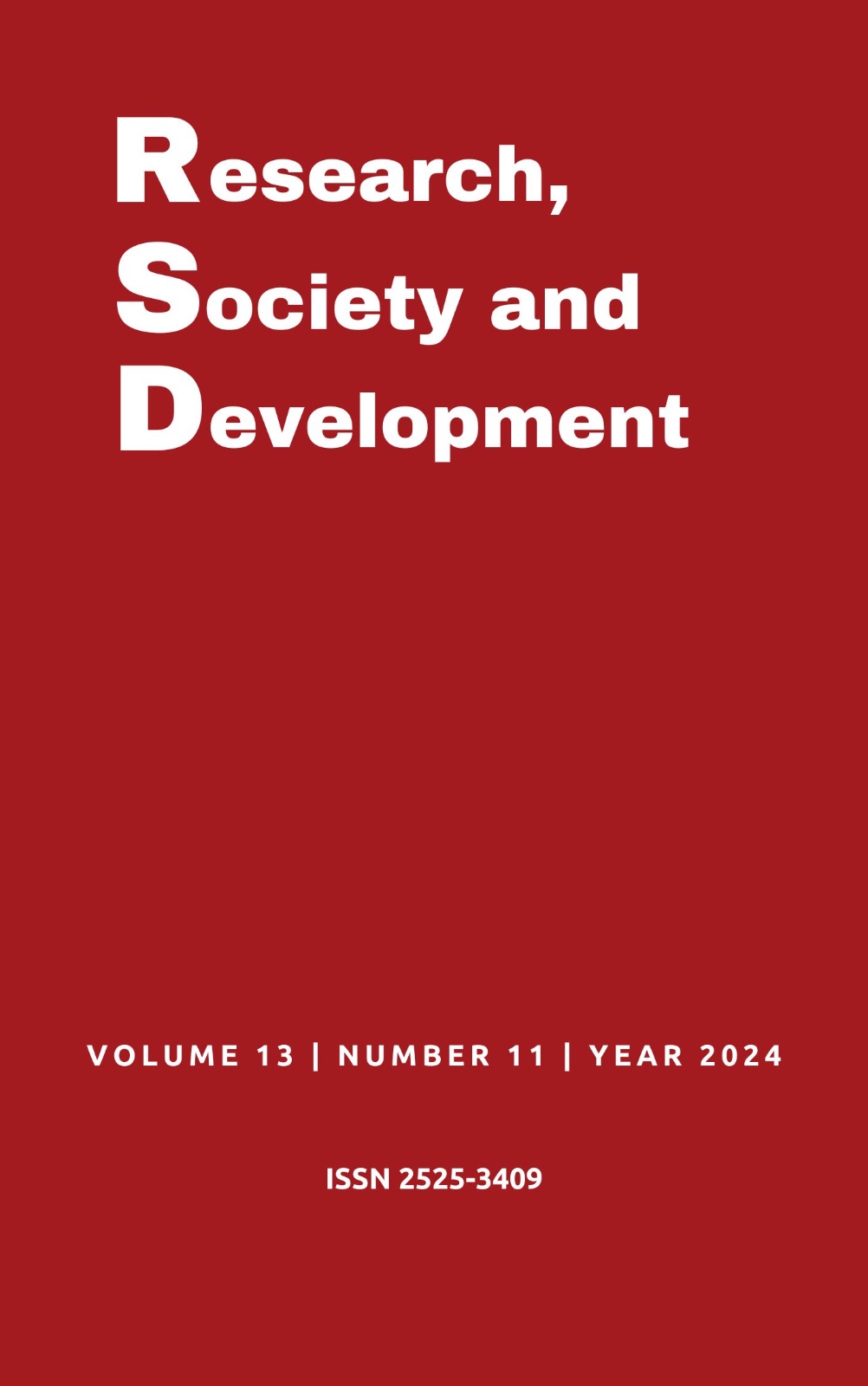Retrospective study of the relationship between Gleason Score and Prostate-Specific Antigen (PSA) initial in the presence of metastases
DOI:
https://doi.org/10.33448/rsd-v13i11.47271Keywords:
Bones, Prostate cancer, Prostate-specific antigen.Abstract
Prostate cancer primarily metastasizes to the bones, resulting in the production of damaged bone matrix and an increase in lymph node chains in the iliac region of the obturator foramen. When identified in advanced stages, this condition presents high morbidity and mortality. The aim of this study is to identify the most prevalent histological grade in cases of advanced prostate cancer with metastasis, to verify if there is concordance between the two values, PSA (Prostate-Specific Antigen) and Gleason Score, in metastatic cancer situations, and to analyze if these two parameters independently influence disease progression. The research is characterized as a retrospective, descriptive study with a quantitative approach. Although a correlation between PSA and the Gleason Score was observed, it was weak, indicating that PSA alone is not a reliable parameter to assess tumor aggressiveness. Additionally, the data revealed that Gleason Score 7 was the most frequent among patients, which may indicate its clinical relevance in the studied population. The implications of this study suggest the need for more effective screening and personalized interventions in the management of prostate cancer. The weak correlation identified between PSA and Gleason emphasizes that healthcare professionals should adopt a multifaceted approach in evaluating patients, taking into account not only these markers but also other clinical factors and biomarkers that may impact the prognosis.
References
American Cancer Society. (n.d.). Understanding the PSA Test. Recuperado de www.cancer.org.
Asano, E., et al. (2018). Câncer de próstata com metástase óssea: impacto econômico para o Sistema de Saúde Suplementar brasileiro. Jornal Brasileiro de Economia da Saúde, 10(2), 157–164.
Bonita, R., Beaglehole, R., & Kjellström, T. (2006). Basic epidemiology (2ª ed.). Geneva: World Health Organization.
Bubendorf, L., et al. (n.d.). Metastatic patterns of prostate cancer: An autopsy study of 1,589 patients. Human Pathology.
Damião, R., et al. (2015, 31 de agosto). Câncer de próstata. Revista Hospital Universitário Pedro Ernesto, 14(0). Recuperado de https://www.e-publicacoes.uerj.br/index.php/revistahupe/article/view/17931/13463.
El Barouki, M. P. (2012, 9 de setembro). Rastreamento do câncer de próstata em homens acima de 50 anos através do exame diagnóstico de PSA. Revista Eletronica Gestão & Saúde, 3(2), 425.
Gil, A. C. (2008). Métodos e técnicas de pesquisa social. São Paulo: Atlas.
Gnanapragasam, V. J., et al. (n.d.). A review of the role of PSA in predicting prostate cancer.
Gordis, L. (2009). Epidemiologia (4ª ed.). Elsevier.
Gleason, D. F. (n.d.). Histological grading and clinical staging of prostatic carcinoma. American Journal of Clinical Pathology.
Heidenreich, A., et al. (2020). EAU Guidelines on Prostate Cancer. European Urology, 32(2), 33-35.
Hu, J. C., et al. (n.d.). Cancer epidemiology and population health. The Lancet.
Lakatos, E. M., & Marconi, M. A. (2003). Fundamentos de metodologia científica. Atlas.
Lima, F. A., & Silva, A. F. (2016). Mutação genética e câncer: O papel da detecção precoce. Revista Brasileira de Oncologia, 62(3), 185-190.
Mohler, J. L., et al. (2019). Prostate Cancer, Version 2.2019, NCCN Clinical Practice Guidelines in Oncology.
Pereira A. S. et al. (2018). Metodologia da pesquisa científica. [free e-book]. Santa Maria/RS. Ed. UAB/NTE/UFSM.
Prado, M. R. M., et al. (2020). Câncer de próstata: uma revisão sobre o seu rastreamento e diagnóstico. Brazilian Journal of Health Review, 3(5), 13954–13962.
Ramos, F. P., & Sabino, I. T. (2019, 12 de março). Câncer de próstata: revisão geral da literatura acerca dos diversos aspectos da doença. (4).
Sarris, A. B., et al. (2018, 18 de maio). Câncer de próstata: uma breve revisão atualizada. Visão Acadêmica, 19(1). Recuperado de https://revistas.ufpr.br/academica/article/view/57304.
Shitsuka, R. et al. (2014). Matemática fundamental para tecnologia. (2ed.). Editora Erica.
Silva, D. M., et al. (2017). Metodologia da pesquisa: técnicas de pesquisa em saúde. Editora Universidade Estadual do Ceará.
Thompson, I. M., et al. (2004). Prevalence of Prostate Cancer among Men with a Prostate-Specific Antigen Level ≤4.0 ng per Milliliter. The New England Journal of Medicine, 350(22), 2239-2246.
Vieira, S. (2021). Introdução à bioestatística. Ed. GEN/Guanabara Koogan.
Downloads
Published
Issue
Section
License
Copyright (c) 2024 Igor de Alencar Veríssimo; Hugo Razini Oliveira; Gabriel Lucas Azevêdo Aguiar; Felipe Bezerra da Silva Moreno; Mariana Santos de Abreu; Luan de Alencar Veríssimo; Giovanna Pinheiro Torres

This work is licensed under a Creative Commons Attribution 4.0 International License.
Authors who publish with this journal agree to the following terms:
1) Authors retain copyright and grant the journal right of first publication with the work simultaneously licensed under a Creative Commons Attribution License that allows others to share the work with an acknowledgement of the work's authorship and initial publication in this journal.
2) Authors are able to enter into separate, additional contractual arrangements for the non-exclusive distribution of the journal's published version of the work (e.g., post it to an institutional repository or publish it in a book), with an acknowledgement of its initial publication in this journal.
3) Authors are permitted and encouraged to post their work online (e.g., in institutional repositories or on their website) prior to and during the submission process, as it can lead to productive exchanges, as well as earlier and greater citation of published work.


